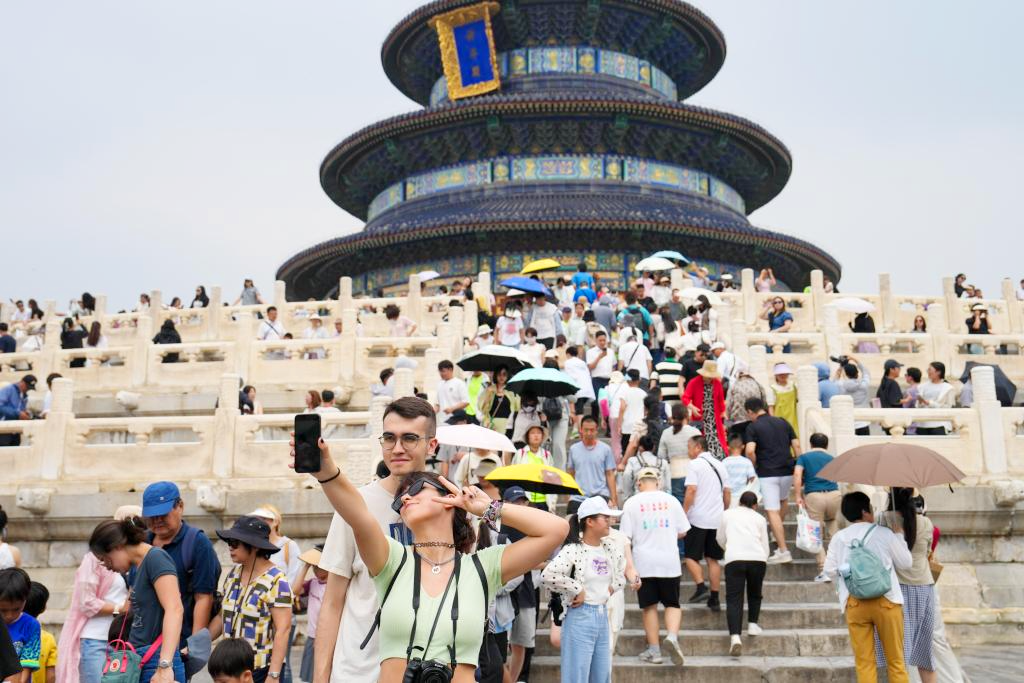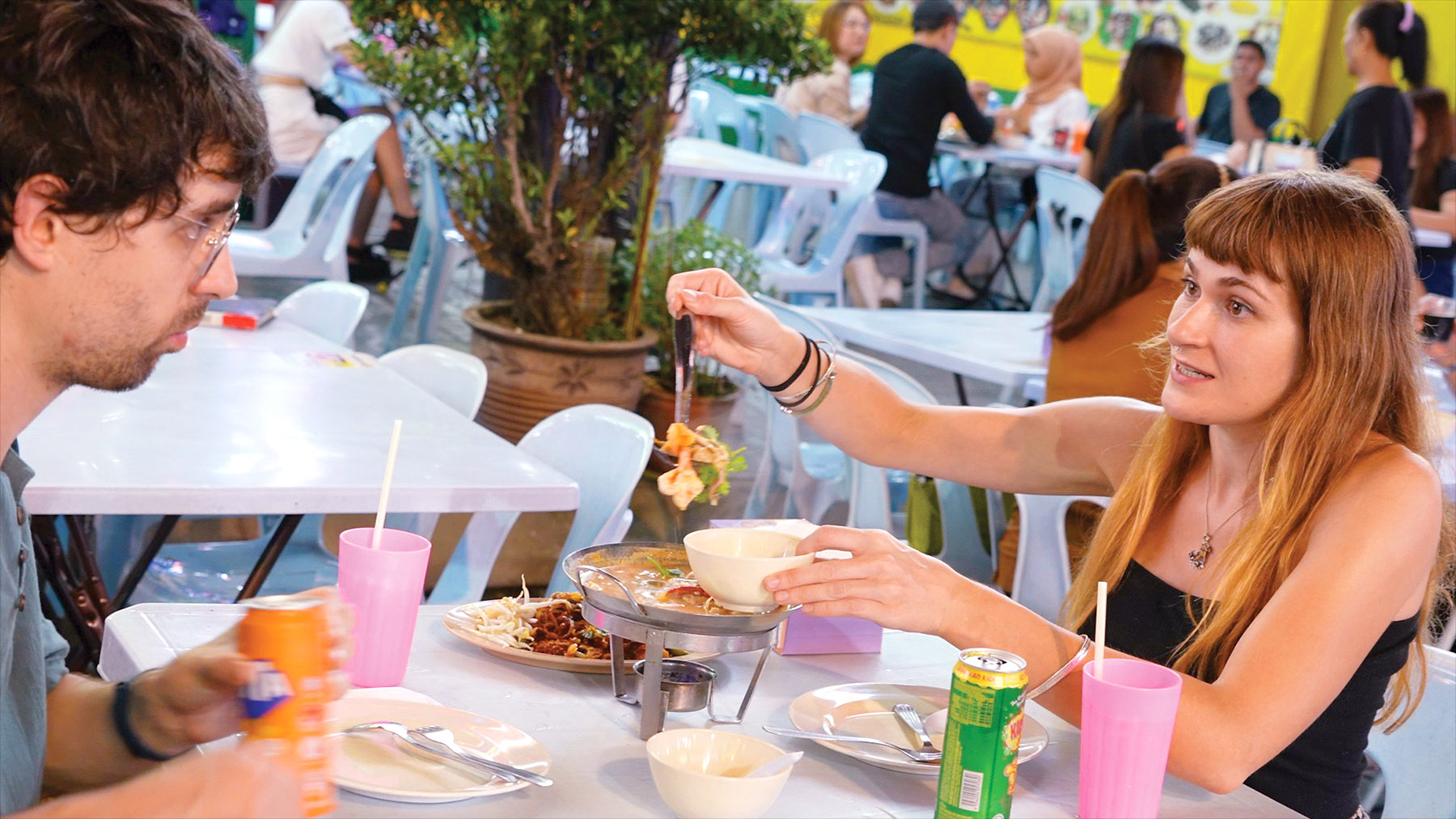Visa exemptions and the digital revolution are propelling Chinese tourists onto the global stage, transforming travel habits and strengthening international bonds. Hu Yuyan and Lesley Liu reports in Hong Kong.

Visa-free-entry policies for Chinese nationals have fueled a surge in outbound Chinese tourists, whose travel behavior has been reshaped by greater use of social media when making travel decisions.
An increase in the number of Chinese visitors to international destinations is expected to enhance people-to-people exchanges and cooperation in sectors beyond tourism, which will ultimately contribute to economic growth and stability, experts and officials said.
According to the Report on the Development of Outbound Tourism in China (2023-24) by the China Tourism Academy, the number of Chinese outbound tourists exceeded 87 million in 2023 and is expected to reach 130 million in 2024.
READ MORE: China implementing unilateral visa-free policy for 29 countries
Chinese online travel platform Ctrip saw a year-on-year increase of over 40 percent in outbound bookings this summer. Countries that implemented visa-free measures for Chinese nationals have seen robust bookings.
Malaysia, Singapore and Thailand, which enjoy mutual visa exemptions with China, form a “golden route” for Chinese travelers. Bookings for the three countries this summer increased nearly 50 percent over the same period last year, according to Ctrip.
Malaysia scrapped visa requirements for Chinese travelers on Dec 1, 2023. That month, the country welcomed around 168,000 Chinese tourists, representing a 35.1 percent increase from the previous month, according to Manoharan Periasamy, director-general of Tourism Malaysia.
Visa-exempt countries such as Tunisia and the United Arab Emirates were popular choices for Chinese travelers during the Dragon Boat Festival holiday in June, with tour bookings on Ctrip increasing 171 percent and 141 percent respectively.
Social media’s influence
The surge in Chinese tourists has been bolstered by greater use of social media to consult travel reviews and share travel experiences, which enhances the visibility of destinations.
A search for the Chinese-language equivalent of “recommendations for visa-free destinations” on the Chinese social media platform Xiaohongshu returns more than 1.45 million results, attracting potential visitors and helping travel planners make informed decisions.
According to a 2023 report by Beijing-based media analytics company Topklout, over 80 percent of Chinese travelers consult online platforms while planning trips.
“I go to Xiaohongshu for travel tips and recommendations, while using other social media platforms like Douyin for supplementary information,” said Jin Dongkai, a Chinese tourist who visited Malaysia. Based on social media posts, he prepared a detailed itinerary that included recommendations for the best spots to take photographs.
Jin said he believes social media posts are based on real experiences, which can help him avoid potential pitfalls.

The vast number of experience-sharing posts on social media has narrowed the information gap and kindled young tourists’ wanderlust.
For example, Ding Jian, a tourism professional working in Southwest China’s Yunnan province, saw social media posts about traveling to Laos by train and decided to get on board when the China-Laos Railway started operating in 2021.
“I read travel guides online a couple of weeks ahead of my trip and planned the itinerary according to my own schedule,” Ding said. “Generally, I prefer solo travel rather than joining a tour group. I read the guides and figure out how to plan the itinerary on my own.”
Zhao Hai, director of international political studies at the Beijing-based National Institute for Global Strategy, said there has been a generational change in Chinese travelers.
“The older generation traveled in groups. They went to Europe and visited eight or 10 countries all in one go. They went to Southeast Asia and visited Singapore, Malaysia and Thailand all in one go. This is the traditional way of traveling,
“The new way of traveling is very different, and that is what we call individual or family travel. This way, tourists follow an itinerary which they have created based on online research before they embark on their journeys,” Zhao said.

He added that the younger generation’s ability to communicate in English enables them to explore lesser-visited places, which he believes will increase their interaction with local people.
In 2023, the top three trending travel topics on a major Chinese social media platform were “traveling as a local”, “micro vacation” and “niche holidays”. This indicates that tourists prefer exploring the streets and alleys of a city at a slower pace rather than rushing through popular attractions without absorbing the local culture.
The increased use of social media is beneficial for hospitality businesses, as it helps drive word-of-mouth sales and expedites the delivery of services.
Wong Ah Wah, a restaurant in Kuala Lumpur that is popular on Chinese social media, has seen an influx of Chinese diners.
“Today’s tourists do everything by themselves,” said Wendy Loke, who has worked at the restaurant for over 40 years. “They (some Chinese diners) said they learned about us from social media and they know very well what our signature dishes are.”
“Now our guests can place orders shortly after sitting down,” another employee added. “They no longer need to browse through a physical menu. Instead, they make quick decisions based on social media recommendations.”

Strengthening ties
The growth in outbound Chinese tourists benefits the tourism industry and strengthens overall relations between China and other countries.
Ouyang Yujing, China’s ambassador to Malaysia, predicts that Chinese tourist arrivals in Malaysia will surpass the 2019 tally of 3.1 million by the end of 2024.
He said the increase in tourism reflects the enthusiasm for people-to-people exchanges between the two countries and will enhance bilateral cooperation in areas beyond tourism, such as technology, culture and education.
ALSO READ: Visa-free policy helps promote global exchanges
Mohamed Iqbal Rawther, vice-chairman of the KSI Strategic Institute for Asia Pacific, a Kuala Lumpur-based think tank, sees social media as an effective marketing tool that enables businesses to reach a large audience without distributing physical pamphlets.
Zhao from the National Institute for Global Strategy predicts that Southeast Asia will receive a growing number of young Chinese tourists, many of whom are avid users of social media.
He said people-to-people exchanges can promote mutual understanding between China and countries such as Malaysia, and their solid friendships will foster unity against external threats and ultimately contribute to peace and stability.
Contact the writers at huyuyan@chinadailyhk.com


